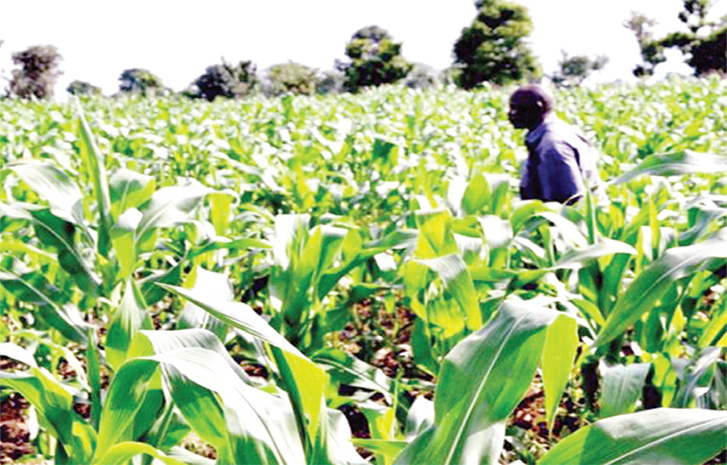How maize price pushed more Katsina farmers into massive cultivation
Despite the insecurity that prevented many farmers from accessing their farms, the volume of maize cultivated in Katsina State this year is said to be unprecedented in the last ten years. According to the farmers, high cost of the produce and the general food crisis compelled them to produce more. Sani Aliyu, a farmer in […]

File photo of a maize farm
Despite the insecurity that prevented many farmers from accessing their farms, the volume of maize cultivated in Katsina State this year is said to be unprecedented in the last ten years.
According to the farmers, high cost of the produce and the general food crisis compelled them to produce more.
Sani Aliyu, a farmer in Malumfashi, said farmers have learned their lessons from the general high cost of living, hence they concentrated more on food production this farming season.
“It got to a point where a 100kg bag of maize was sold for N97,000 in this zone and in other zones, N100,000, with many households going to bed on empty stomach. As you can see, farmers have done their best by massively cultivating maize this season to mitigate the food crisis we are experiencing,” he said.
Aliyu added that from Sabua Local Government Area in the southern part of the state to Danmusa, Dutsinma, Kurfi, Kankiya, Charanchi in the northern part, maize was cultivated with very high hopes of bumper harvest in the next few weeks.
“Farmers in the northern part of the state who hitherto produced millet and sorghum now have a maize variety suitable for Sahel region produced by IITA. Maizehyb-5 and Maizehyb-6 are drought-tolerant and heat-resistant varieties with maturity periods of around 80 to 150 days suitable for the Sahel,” Aliyu stated.
Another farmer in Musawa, Garba Hambali, said another motivating factor for the massive maize cultivation this year was an opportunity for the farmers to intercrop it with beans.
“Market price of beans has reached N200,000, such that many households could not afford it in their meals; so, it is part of our farming strategies to intercrop beans with maize which yields more profit for the farmer, rather than planting sorghum, soybeans or rice. All things being equal, half of the maize can cover the entire cost of production while the beans would stand as a bonus,” Hambali said.
He added that despite the mass production of maize, its market price still remains high.
“Early harvesters of the produce are now enjoying the price of between N50,000 and N60,000 depending on quality and level of dryness. The price will hardly be much lower than that of during the harvest proper as hoarders are gearing to stockpile for future sales,” he said.
Malam Sabitu Anas, a maize dealer in Kafur market, said the major threat to food security in the state is the activities of grain hoarders who are after huge profit when there is scarcity of the produce in the markets.
“Besides the companies that buy in bulk for their production, the number of grain hoarders keeps growing yearly due to the huge profits they make. New stores are built in every part of the state for hoarding which is creating scarcity of the produce in the market,” Sabitu said.
